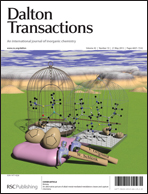Recyclable calix[4]arene–lanthanoid luminescent hybrid materials with color-tuning and color-switching properties†
Abstract
Inorganic–organic hybrid materials combine the properties of both components providing functionality with a wide range of potential applications. Phase segregation of the inorganic and organic components is a common challenge in these systems, which is overcome here by copolymerizing a metal-free
![Graphical abstract: Recyclable calix[4]arene–lanthanoid luminescent hybrid materials with color-tuning and color-switching properties](/en/Image/Get?imageInfo.ImageType=GA&imageInfo.ImageIdentifier.ManuscriptID=C3DT33059A&imageInfo.ImageIdentifier.Year=2013)

 Please wait while we load your content...
Please wait while we load your content...